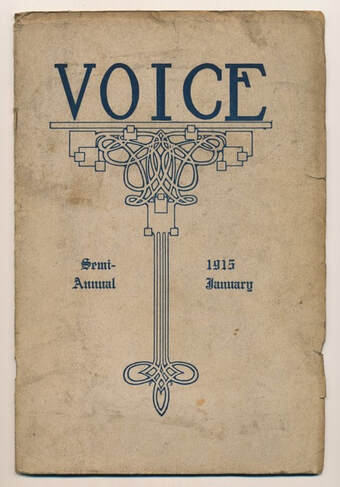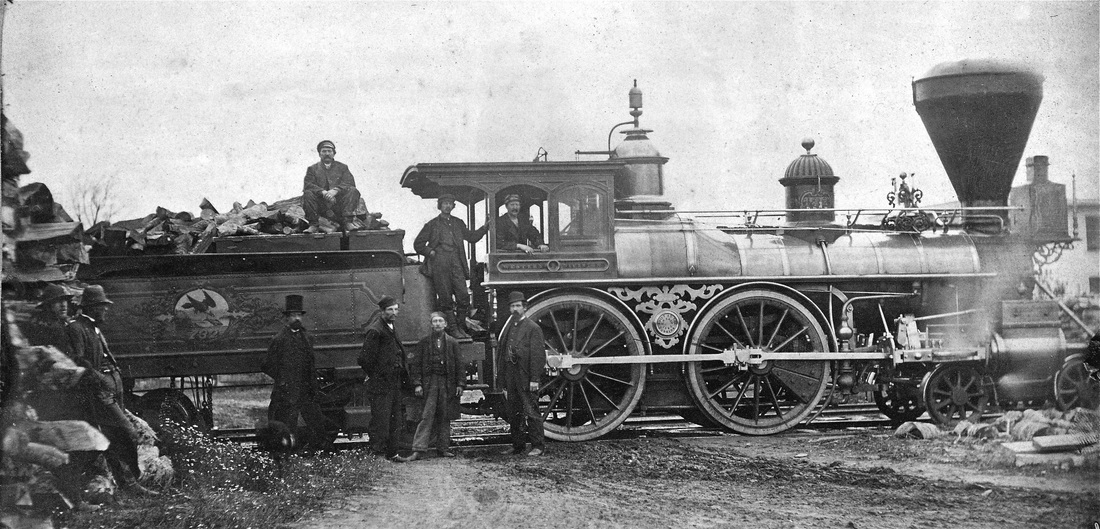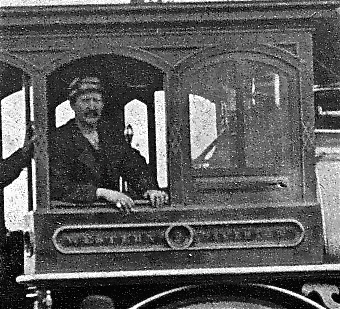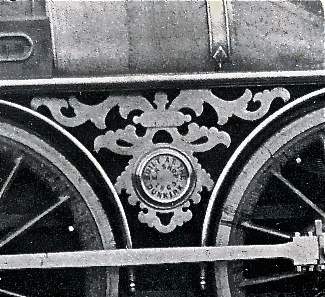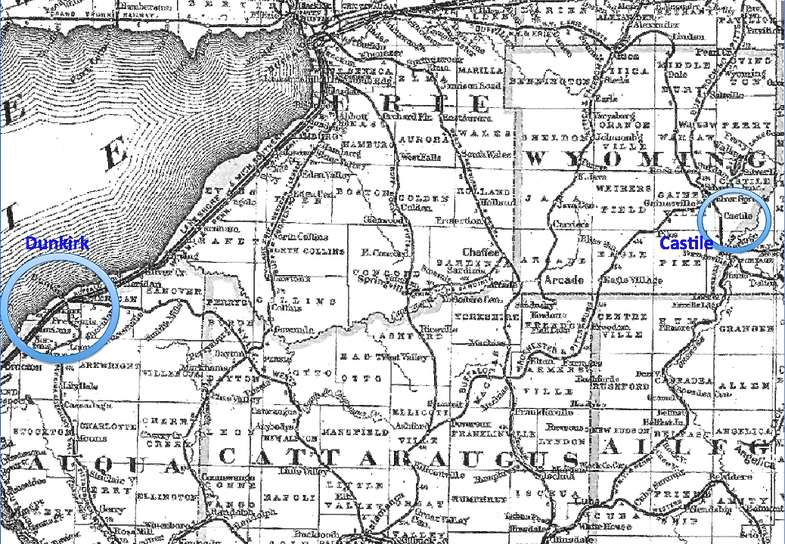mysteries to solve
|
THE SEARCH FOR THE MISSING MCKINLEY HIGH SCHOOL YEARBOOK
IF YOU THINK YOU MAY HAVE THE MISSING 1915 YEARBOOK, PLEASE TRY TO LOCATE IT SO WE CAN ADD IT TO THE WEBSITE. WE HAVE ALL OF MCKINLEY HIGH SCHOOL'S JUNE YEARBOOK ISSUES EXCEPT JUNE 1915, WHICH MEANS THAT JAMES MASON’S SENIOR YEAR AND DAVID MASON’S JUNIOR YEAR ARE MISSING. ALL WE HAVE IS THIS COPY OF THE VOICE’S JANUARY, 1915 SEMI-ANNUAL EDITION. |
WHERE IN IRELAND DID THE MASONS LIVE?
From The Irish Times (Dec 12, 2019): "Two days into the Civil War, a massive explosion destroyed the Public Records Office attached to Dublin’s Four Courts and with it hundreds of years of documented history. "The census records for the whole of the 19th century going back to the first in 1821 were incinerated. Chancery records, detailing British rule in Ireland going back to the 14th century and grants of land by the crown, were also destroyed along with thousands of wills and title deeds." As a result of this fire, searches on Ancestry.com and elsewhere haven't been able to provide any information about where the Masons lived before they left Ireland, or even what their names were. In a letter sent from Prussia to his sister Florence dated June 21st, 1919, David Mason says, "James and I put in for a trip to Britain (14 days). Think I’ll lead him straight to Killarney first. Then we might condescend to look into Dublin, Glasgow, London and some other unimportant places.” Maybe he'd been told that Killarney was where the Masons lived before they left for Canada? As it turned out, this trip they "put in for" never happened. If it had, perhaps they would've written more about our Irish ancestry in their subsequent letters. One hopeful note: this article in The Irish Times describes Ireland’s Virtual Record Treasury research project, which has sought to retrieve as many of the documents as possible through duplicates in other archives: |
James Mason's Missing WWI Recollections
What's become of James Mason's recollections of his WWI experiences? In 1977 James asked Hubert 'Pot Hound' Dawson to share his recollections about the war with him, and over the next three years Dawson sent him four letters about their time together during the war. In his last letter he's clearly responding to a story that James shared with him ("Your information brought back very faint memories of something long forgotten. I did not see the episode altho there is some recollection of hearing about it.").
In 2014 Dawson's grandson contacted us after finding James on this website, and asked if we had any of James' recollections to share with him and Dawson's other descendants, but no one in our family recalls having seen anything written by James about the war.
Could they still exist in a long-ignored folder at the bottom of a box in someone's attic? Recently Robert Mason's 19th century letters to Frances Hurd Mason were found in a long-ignored manila envelope. Will James Mason's long lost correspondence with Pot Hound Dawson also surface someday?
In 2014 Dawson's grandson contacted us after finding James on this website, and asked if we had any of James' recollections to share with him and Dawson's other descendants, but no one in our family recalls having seen anything written by James about the war.
Could they still exist in a long-ignored folder at the bottom of a box in someone's attic? Recently Robert Mason's 19th century letters to Frances Hurd Mason were found in a long-ignored manila envelope. Will James Mason's long lost correspondence with Pot Hound Dawson also surface someday?
Mystery Train
This photo was discovered on the back side of the only known photo of Ziba Hurd (1745-1854), who founded Castile, NY in 1816. We've been able to determine that the locomotive was manufactured in Dunkirk, NY, which is about 80 miles west of Castile, but don't know why it was hiding in the same picture frame that hung on our family's walls for decades (When Jane Mason gave the framed picture of Ziba Hurd to Chuck Little, she told him it had been on a wall at the house on Adams Street until she took possession of it).
JANUARY, 2016 UPDATE: In 1853 Ziba Hurd created his Last Will & Testament, which states in part, "I give and bequeath to my wife Mary...the dividend or interest of all my railroad stock, which I have or hold in the Buffalo & New York City Railroad during her natural life..."
However, Ziba died in 1854 and Mary in 1864, while the train in the photo above appears to have been manufactured in 1869. So even though Ziba and Mary owned railroad stock, the photo couldn't have existed during their lifetimes, and must have been acquired and framed by someone else -- perhaps one of Ziba's children?
However, Ziba died in 1854 and Mary in 1864, while the train in the photo above appears to have been manufactured in 1869. So even though Ziba and Mary owned railroad stock, the photo couldn't have existed during their lifetimes, and must have been acquired and framed by someone else -- perhaps one of Ziba's children?
Don Mason succeeded in enlarging portions of the photo, which enabled us to read some of what's engraved on it.
Russ Mason then sent these photos to Aaron Isaacs, a train expert at the New York train museum, and in a series of emails he had quite a bit to say about our photo:
"The medallion is an early version of what we now call a builder's plate, listing when and where the locomotive was built. I read it as 'Built at the E(rie) R(ailway) Shop 1869 Dunkirk.' I can read the 1869 pretty clearly on the scan you sent.
"They only built four of them in 1869 because Brooks took over the shops from the Erie late in the year, I believe November. The one visible tree has no leaves, yet there's no snow on the ground, which sounds like November. I take this to be one of those first four locomotives, perhaps the very first, since that would be most likely to attract a photographer.
"The number on the locomotive cab is almost certainly the locomotive's number. Number 2 was probably the second one owned by the railroad. That implies a brand new railroad.
"Railroad names changed with some frequency in the 1800s, because it was a speculative business and lines were built, went bankrupt and were bought, sold and consolidated into larger companies. The word 'Western' was pretty common in railroad names. It could have been the Western New York & Pennsylvania, but I'm skeptical that they would have spelled out the first word, then abbreviated the rest. Usually they either spelled out all the words or abbreviated the whole thing.
"If...the locomotive was built in Dunkirk, it had to be by the Brooks Locomotive Works, which was founded in 1869. The locomotive in the photo is typical of that year, and those design features continued into the 1870s. Also, the clothes look about right for that time. While this locomotive could have remained in operation into the 1880s or even the 1890s, it looks too new and well maintained to be that late. For all those reasons, I'd date the photo to the period 1869-1875.
"Brooks was likely the largest single employer in the immediate area, with 600 on the payroll by 1871 and probably more later, so perhaps someone in [your] family worked for them."
Russ Mason then sent these photos to Aaron Isaacs, a train expert at the New York train museum, and in a series of emails he had quite a bit to say about our photo:
"The medallion is an early version of what we now call a builder's plate, listing when and where the locomotive was built. I read it as 'Built at the E(rie) R(ailway) Shop 1869 Dunkirk.' I can read the 1869 pretty clearly on the scan you sent.
"They only built four of them in 1869 because Brooks took over the shops from the Erie late in the year, I believe November. The one visible tree has no leaves, yet there's no snow on the ground, which sounds like November. I take this to be one of those first four locomotives, perhaps the very first, since that would be most likely to attract a photographer.
"The number on the locomotive cab is almost certainly the locomotive's number. Number 2 was probably the second one owned by the railroad. That implies a brand new railroad.
"Railroad names changed with some frequency in the 1800s, because it was a speculative business and lines were built, went bankrupt and were bought, sold and consolidated into larger companies. The word 'Western' was pretty common in railroad names. It could have been the Western New York & Pennsylvania, but I'm skeptical that they would have spelled out the first word, then abbreviated the rest. Usually they either spelled out all the words or abbreviated the whole thing.
"If...the locomotive was built in Dunkirk, it had to be by the Brooks Locomotive Works, which was founded in 1869. The locomotive in the photo is typical of that year, and those design features continued into the 1870s. Also, the clothes look about right for that time. While this locomotive could have remained in operation into the 1880s or even the 1890s, it looks too new and well maintained to be that late. For all those reasons, I'd date the photo to the period 1869-1875.
"Brooks was likely the largest single employer in the immediate area, with 600 on the payroll by 1871 and probably more later, so perhaps someone in [your] family worked for them."
Railroad map of the state of New York to accompany the twelfth annual report of the Board of Railroad Commissioners of the State of New York, 1894.
http://www.loc.gov/resource/g3801p.rr002700/
